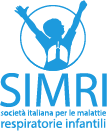Autore: Valentina Agnese Ferraro, MD PhD, UOSD Pneumologia e Allergologia Pediatrica, Dipartimento di Salute della Donna e del Bambino, Azienda Ospedale Università di Padova
Respiratory allergens, or inhalant allergens
Respiratory allergens, or inhalant allergens, are substances that, when inhaled, can cause allergic reactions with symptoms such as itchy eyes and nose, tearing, mucus discharge, cough, and acute asthma attacks. In individuals allergic to one or more of these substances, it is essential to limit exposure as much as possible to improve symptom control.
- What Are Inhalant Allergens? Perennial Allergens, Seasonal Allergens
Inhalant allergens are several and are divided into two main categories: perennial allergens and seasonal allergens. Perennial allergens include dust mites, pet dander, and molds, which are present in the environment throughout the year. Seasonal allergens include pollens, grasses, and flowers, which are released into the air during specific times of the year. Here is a list of the main respiratory allergens:
- Dust mites: microscopic creatures, invisible to the naked eye, that feed on skin flakes from humans and animals. They are mainly found in indoor dust. High concentrations are especially present in mattresses, armchairs, carpets, and other furnishings. Optimal growth conditions include relative humidity between 60% and 80% and a temperature of 18–24°C (64–75°F). To reduce exposure to dust mites it is recommended to: reduce indoor humidity and temperature; wash bedding frequently in water at temperatures >60°C; expose bedding to sunlight; cover mattresses and pillows with anti-mite fabric covers; remove dust daily from surfaces using damp cloths; air out rooms daily; avoid carpets, curtains, toys, stuffed animals, books, and newspapers—especially in the bedroom
- Pet dander and skin particles: released from the saliva, dander, and urine of dogs, cats, birds, and cockroaches. Once dried and broken into particles, they remain airborne in dust and then settle into clothing, upholstery, curtains, and carpets, where they can linger long after the animal is removed. To reduce exposure: remove the animal from the household (or at least from the child’s bedroom, if full removal isn’t possible); deep clean the environment thoroughly
- Molds: microscopic fungi that produce tiny spores, which become airborne especially during summer and autumn. Mold grows in humid and poorly ventilated environments (bathroom, kitchen, garage) and develops faster in warm and humid conditions. To reduce exposure: ensure exterior walls, foundations, and attics are insulated and ventilated; keep indoor humidity below 50%, using dehumidifiers if necessary; ventilate rooms frequently; remove mold spots; carefully manage indoor plants (repot, move, or water appropriately); regularly clean shower curtains, sinks, bathtubs, and bathroom/kitchen walls with bleach
- Pollen: invisible particles released into the air by trees, grasses, and flowers, with peak concentration in spring. To reduce exposure: keep windows and doors closed during pollen season; avoid going outdoors during high-pollen days or peak hours; shower and change clothes after being outside; dry laundry indoors to prevent pollen from settling on fabrics.
- Skin Prick Tests and IgE Dosage for Respiratory Allergies
Diagnosing inhalant allergies
The main tests for diagnosing inhalant allergies are skin prick tests and blood tests for IgE antibodies. Skin prick tests are performed by applying a small amount of allergen to the skin of the forearm, then lightly pricking the surface with a fine lancet to allow the substance to enter the outer skin layers. The test is positive if a wheal (swelling or redness) appears. IgE blood tests measure the quantity of IgE antibodies in the blood in response to specific allergens.
No metadata found.



